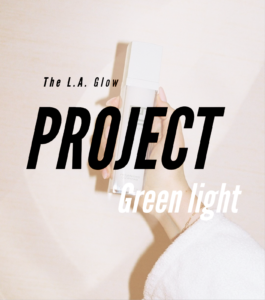Damask Rose: A Comprehensive Guide
The rose is usually known as the queen among flowers. It is so beautiful with its petals arranged in many whorls. More so, it has a sweet and unique fragrance. The Damask rose’s scent is entirely captured in the petals’ aqueous extract.
However, the essential oil from this flower is more than simply a beautiful fragrance. Its healing and medicinal qualities have been in use for many years.
Anyway, let’s dive into some of this history, as well as the different types that exist.

Damask Rose Background
DNA analysis has discovered that the original Damask roses came about due to a natural double-crossing of three species. These include a hybrid created by crossing R. gallica with R. fedtschenkoana crossed again with R. moschata (“The Musk Rose”). This hybridization must have occurred in cultivation – most likely in Central Asia – because these three species’ natural habitat does not overlap.
Damask roses found their way to Europe via the Middle East and Damascus (thus the name Damask) in the early Middle Ages. They’re specifically well-known for their natural oils. Which has generally been used for many years to manufacture attar of roses.
Damask rose was initially discovered in Italy in the 16th century, and this flowered more than once. However, the “Autumn Damask” was the only rose to have shown this repeat-flowering property until the arrival of roses from Europe from the Far East, around the 18th century.
The French referred to it as “Quatre Saisons” (“Four Seasons”), while the Italians called it “La Rosa di Ogni Mese” (“The Monthly Rose”) – which was relatively more optimistic. In England, it is called the “Autumn Damask” (“or Rosa damascena bifera – which means twice flowering”). It also serves as one of the parents of Bourbon and the original Portland roses.
What about the different types? Being one of the oldest varieties, this Damask has created a wide range of new varieties. All this while preserving its distinct heritage.
Some examples include:
- Angelina
- Blush Damask
- La Ville de Bruxelles
- Quatre Saisons
- Ispahan
- Celsiana
- Rosa Damascena Semperflorens (or Autumn Damask)
- Hebe’s Lip
- Leda
What Is a Damask Rose?
Rosa damascena (Damask roses) are among the oldest rose family members, dating back many centuries ago. They’re well-known for their pink or white double flowers and their unique and robust fragrance. This is the reason the flowers are used in producing perfumes. Not only are they easy to grow, but Damask roses can also withstand diseases and will allow an appealing, fragrant centerpiece for your garden.
This Damask rose, also popularly known as the Rose of Castile or the Damascus Rose, came from the Eastern Mediterranean and was a natural hybrid between a wild rose species and the Gallica rose. The plants consist of medium-green leaves and pink or white flower clusters on extremely thorny stems. Typically, these rose bushes usually arch as they grow to about 8 ft.
Rosa x Damascena
This is a bush that grows to about 7 ft high, with branches and stems heavily armed with curved prickles of different sizes, which grade into stiff bristles. They also have leaves with 5 -7 leaflets, prickly underneath, and rachis hairy.
The leaflets are either ovate or oval, sharply and toothed greyish and hairy underneath, and acute to obtuse at the apex. With semi-double flowers, fragrant, in shades of pink or blush, borne in up to a dozen loose clusters, each on a long stalk heavily covered with small prickles and glandular bristles (but the inflorescence is more compact in certain Autumn Damasks).


The sepals are up to twice the flower-buds length, with slender or even slightly expanded tails. They also have lateral appendages, hairy and glandular on the back, powerfully reflexed at flowering-time, and soon deciduous. The receptacle is narrowly campanulate or narrowly ellipsoid. And, at times (particularly in certain Autumn Damasks), it is funnel-shaped and consists of a similar coverage as the sepals.
Rosa Damascena Plant
This plant is not well-known in the wild state. Although its affinity is with R. gallica, its armature is usually stronger and denser, and the bristles tend to be stiffer and the prickles more numerous. The inflorescence is laxer, consisting of more innumerable flowers, while the receptacles are more elongate.
The sepals are relatively longer and more pinnated (but densely pinnated in certain kinds of R. gallica). Apart from being taller, it is also entirely reflexed at flowering time. Thus, it’s most likely a more or less fixed hybrid, showing minimal variation, and with Rosa moschata as the other parent.
However, Dr. Hurst recommended R. phoenicea when it comes to the Summer Damasks – these are the common R. Damascena. On the other hand, R. moschata was only suggested for the Autumn Damasks.
- Damascena has been cultivated in Europe ever since the early 16th century. In 1551, the Spanish doctor Monardes referred to the Damasks as Rosae Persicae or Rosae Alexandrinae. The latter indicated that they had arrived in Spain from Alexandria, and the former was their birthplace.
In stating that the Germans, French, and Italians referred to this rose as Rosa damascena, from the belief that it originated from Damascus, the doctor was confusing this rose with the Musk rose, or R. moschata. It was to the latter that the term Rosa damascena was used outside Britain.
When it comes to R. Damascena, the most common name was Rosa incarnata, or Rosa provincialis in the Rhineland and the Low Countries. R. pallida was another common term, particularly by the apothecaries. However, it was known as Rosa damascena in British gardens, and it appears under this name in every edition of Miller’s dictionary. This includes earlier works in Theatrum Botanicum, Parkinson’s Paradisus, and Gerard’s Herball.
Skincare Benefits of Rosa Damascena (Rose)
Apart from its beautiful appearance, this plant consists of a wide range of incredible skincare advantages.
Rosa damascena, popularly referred to as the rose of Castile or Damask, is a hybrid of two different roses. Damask rose came from the Middle East. And for a long time now, the Damask rose has been grown to create rose oil via a procedure known as distillation.
Since rose oil contains a potent natural aroma, it makes an excellent ingredient in modern perfumes and body oil. That’s why Vitality body oil uses this incredible rose scent!


Additionally, rose water is created from Damask roses via distillation. It is used for cosmetic, spiritual, and medicinal reasons. Historians also claim that Cleopatra often bathed in rosewater since she believed it was good for her skin. As of now, you can find rosewater throughout the skincare industry. Therefore, Cleopatra was undoubtedly the ultimate beauty queen!
Because of its longevity and popularity, there have been very many studies on the Rosa damascena.
Let’s dive into some of its beautiful qualities:
Antioxidants Properties:
Since the Damask rose is filled with antioxidants, it is very effective in combating free radicals. Don’t forget that free radicals are usually responsible for skin damage, and this will ultimately enhance skin aging. This is the reason antioxidants are vital in skincare! Another compound of R. Damascena is flavonoids, which have shown great potential to prevent UV damage.
Antibacterial & Antiseptic Properties:
Research has proven that Rosa damascena possesses potent antiseptic and antibacterial activity against bacteria strains like Propionibacterium acnes, which is responsible for acne. With these qualities, Rosa damascena is an effective ingredient for skin protection against infection and bacteria.
Anti-Inflammatory Properties:
Research has also proven that R. Damascena comprises anti-inflammatory activity. That means that it’s an ideal option for combating redness and inflammation.
Anti-Aging Properties:
There is also vitamin C in the Damask rose, which is the primary reason it’s so great for the skin. Another reason is its production of elastin and collagen, making the skin firm and ultimately avoiding premature aging.
Old Rose Color
You might be wondering what colors make old roses? Read on.
Old rose color consisting of hexadecimal color code #c08081 is a medium, pink-red light shade. Regarding the RGB color model, code #c08081 generally consists of 50.59% blue, 50.2% green, and 75.29% red. And in the HSL color space, the code comprises a hue of 359°, 63% lightness, and 34% saturation.
Traditional Roses
We all deserve to get roses delivered to our doorstep! But, of course, most people would love to fill their homes with traditional roses. There are many types of conventional roses. Below are a few examples of some.
-
American Traditional Rose
Typically bred from “Fragrant Cloud,” this constant blooming densely fragrant climbing rose comprising pointed buds open into fully double salmon blooms, consisting of a brownish cast. It is lovely, yet unusual. Apart from incorporating large mid-green foliage, it is also well-drained, moist, and contains slightly acidic soil.
American traditional rose has a moderate growth rate to an approximated height of 10 – 12′ and width of around 5 – 7″. When it comes to ideal light conditions, it needs partial sun. This rose also has many applications, such as cutting, rose garden, specimen, and fragrance.
-
Austin Roses
David Austin – sometimes known as English roses and not officially acknowledged as a separate class – is extremely popular among retailers and consumers. This is because David Austin began breeding roses 50+ years ago to form a new group of roses that contained the best properties of both Traditional and Modern Roses.
The many varieties of David Austin tend to feature the heady fragrance and rosette form of Old Roses with the more comprehensive color range and repeat-flowering ability of Modern Roses. Unfortunately, regardless of their popularity, they’re prone to disease and not that hardy like other varieties.
-
Old Garden Roses
Sometimes known as heritage or historic roses, old garden roses are a traditional class of roses that many people bred before introducing the hybrid tea rose in 1867. The roses are much-touted for their high petal count, strong fragrance, ability to withstand the cold, disease resistance, and bloom shape. In general, they bloom once annually during the summer months.
-
Damascus Rose
Damascus roses come from the Caucasus. They’re cultivated in temperate regions of the Mediterranean coast. These include North Africa (Morocco), Lebanon, Syria, and the Grasse region (France). It’s usually harvested before its flowers open to prevent the petals from detaching. Since gathering the rose is specifically delicate, it is generally performed at dawn and from one flower to another to avoid the flowers from being damaged from the sun’s exposure.
Damascus rose extract is obtained from its petals and loaded with phenolic acids, sesquiterpenes, and monoterpenes. It plays a significant role when manufacturing cosmetic products uniquely made to protect hair and skin integrity from different oxidative processes and the sun’s effects. In addition, it consists of astringent, purifying, and antioxidant qualities, which help lower the size of facial pores. It’s an excellent choice for greasy or sensitive skin.
It contains high valued essential oil, and its qualities include blood circulation stimulation and hair color protection.
-
Old Fashioned Roses
Have you ever enjoyed walking around an old and abandoned farm or homestead? If so, you most likely must have come across several old varieties of roses climbing on a dilapidated structure or along a fence line.
These incredibly looking flowers have withstood the test of time, and although the rest of the place seems overgrown and quite out of control, they generally tend to add a touch of civilization to that structure.
Not only are these climbing shrubs extremely versatile, but they are also applied as a hedge or even as a touch of color on one side of a barn or house. Perhaps the most attractive way of enjoying them is when they’re combined with other perennials for a color splash in any landscape.
These roses are often located in pastel shades, which is a must for all English gardens. However, this is quite different from the vibrant colors that you commonly find nowadays in the more modern, hybrid roses.
The surprising part is that these small and pale flowers are exuding fragrances that will tickle your nose. Undoubtedly, it would be best to consider these roses if you need to add some wild and natural appearance to your yard.
-
Variegated Roses
Simply put, these are flowers that consist of multiple colors. Since the flower’s petals are usually two-toned, they are striped, speckled, or bordered by a relatively lighter color. If you have been looking for a unique gift for somebody special in your life, these variegated roses are your choice! This rose has a specific rare gene that evokes a vintage feel.
-
Damas Rose
This is just another name for Damask rose. It’s simply the short form of “Damascus,” where the flower is believed to have derived its name.
-
Lokelani Flower
The official flower that’s grown in the Hawaiian island of Maui is known as the lokelani. Contrary to the more popular Hawaiian flower, the hibiscus, this flower isn’t indigenous to Hawaii. Instead, it was initially introduced in the 1800s by Spanish explorers.
Just like other flowers, the lokelani has many names. For example, it is popularly known as the pink Damask rose. So, it’s another type of rose! Simply put, loke means “rose,” while lani refers to “heavenly.”
On the other hand, botanists refer to it as Rosa damascena. Most people refer to it as “the Maui rose.” And apart from Lokelani roses being truly beautiful, their smell is the next best thing. Who wouldn’t want to experience the smell of this heavenly fragrance?! It’s important noting that each Hawaiian island possesses its official flower. For instance, the yellow hibiscus is the official flower of Hawaii and is commonly known as Pua Aloalo in Hawaiian.
-
Roses of the World
Undoubtedly, the rose is the world’s favorite flower, and it’s most likely grown in every region with a desirable climate. And as you have learned, roses possess a long and quite colorful history. There are 30,000+ varieties of roses throughout the world, and they also have a complex but exciting family tree.
-
Damascan Rose
Have you ever heard of companies using Damascan Rose in body oil? It’s a concentrated treatment uniquely made to work with dry skin. What’s more, it can be helpful for stressed skin. It’s a moisturizing treatment loaded with vitamins that will generally improve your skin and help to secure it from harsh elements.
-
Turkey Roses
Since roses are a common garden plant, it’s virtually impossible to establish the number of existing cultivars. However, the East Aegean Islands and the Flora of Turkey identify 24 Rosa species being grown in this region alone.
FAQs
Is Rosa Damascena Good for Skin?
Rosa damascena flower oil (Queen of fats) is the purest of rose oils. It possesses soothing, cooling, and anti-inflammatory characteristics, which are helpful with stress-related conditions. It’s typically obtained by gentle steam distillation from the Damask rose. Additionally, it’s perfect for scarring to help improve skin tone and treating broken capillaries. In addition, it creates a better, smoother skin surface, moisturizes your skin, and balances and tones your complexion.
How Did Thorns Originate in Roses?
Roses have sharp spikes or thorns. They’re tiny outgrowths from a plant’s outer layer and epidermis. Although prickles are the same as thorns, they’re easier to remove. It’s believed that these thorns protect roses from being consumed by animals.
What is the Damask Rose Scent?
It is slightly sweet and very flowery. That’s why it’s commonly used for the most feminine perfumes and body oils. Based on the soil type, it can be fruity, spicy, or lemony.
What Does Damask Rose Color Look Like?
Pink. It’s usually light to moderate pink to light red.









